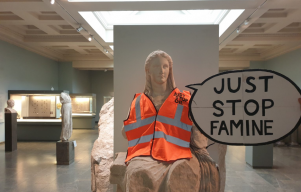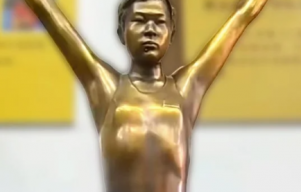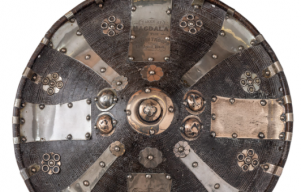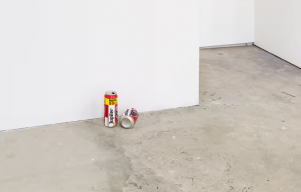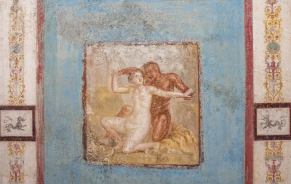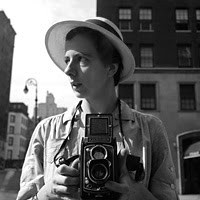
(Photo: Wikipedia / Vivian Maier)
For much of her life, Vivian Maier remained an enigma. A highly talented photographer, her work went largely unnoticed because she kept it hidden from almost everyone around her, including the families in New York and Chicago for whom she worked as a live-in nanny and caregiver. Over five decades, Maier captured the vibrant essence of city life through her Rolleiflex and Leica cameras but printed only a minuscule portion of her hundreds of thousands of images, showing them to virtually no one. Instead, she amassed boxes of negatives and unprocessed film, a treasure trove that would only be discovered after her death.
The world came to know Maier after her death through the contents left in the storage lockers back in Chicago in 2007, which were sold due to failure in payment of the same. This chance discovery led to the discovery of her organization portfolio and prepared the groundwork for her recent acclaim as an iconic street photographer.
The Exhibition and Recognition
"Vivian Maier the mystery, the discovery, and the work - those three parts together are difficult to separate," said Anne Morin, curator of the touring exhibition "Vivian Maier: "Unseen Work," which is a branch of contemporary Swedish contemporary photography museum Fotografiska opened its doors in New York on May 31. Titled "Street of Chicago: The Photography of Vivian Maier," the current exhibition will run up to September 29 and present over two hundred of Maier's photographs; approximately fifty of them are original prints by Vivian. Morin then positions her work in the same way as other street photographers, such as Robert Frank and Diane Arbus, to claim its rightful place in the history of photography. "Everyone will agree with that," Morin said to CNN. "The work is good, and Maier had a great eye for things. And in 10 years, she can bring another distinct show completely different from this one".
Maier's Early Life and Photography
This exhibition serves as a homecoming for Maier, who was born in New York to French and German immigrant parents. She began documenting street scenes in the city during the 1950s, initially using her mother's Kodak Brownie box camera before acquiring her own professional-grade Rolleiflex. Her early works, filled with keenly observed moments of urban life, demonstrate her innate ability to capture the unique characters and situations of the city. From men dozing on park benches to a Central Park Zoo balloon obscuring a father's face as his baby reaches out to him, Maier's photographs convey a deep empathy and sharp wit.
Also Read: Kanye West's Wife Bianca Censori Channels the Flintstones in Bold Stone Age-Inspired Architecture
Despite utilizing commercial studios in New York for film processing, Maier never pursued exhibiting or selling her work. Her return to New York as a celebrated artist is significant for women and all unrecognized artists. "It is never late to repair history," Morin remarked.
New York holds a special place in the history of American photography, noted Sophie Wright, Fotografiska New York's director. "So it's amazing now to be in a position to be bringing Vivian back to that world. She's a rediscovered, important voice of 20th-century photography." Wright emphasized that Maier's photographs, taken with "so much thought and care and lack of self-consciousness," represent pure artistic expression without any audience in mind.
Rise to Public Attention
Maier's work first garnered public attention in 2009, the same year she passed away in Chicago. Collector and amateur historian John Maloof, who had acquired many of her negatives and undeveloped films at auction, shared scans of her photographs on Flickr, seeking advice on their significance. The response was immediate and enthusiastic. Photographers and critics praised Maier's balanced compositions and her insightful, often humorous perspectives on the people and places she encountered.
In 2011, Maloof published "Vivian Maier: Street Photographer," followed by the 2013 Academy Award-nominated documentary "Finding Vivian Maier," co-directed with Charlie Siskel. Since then, numerous exhibitions and biographies have emerged, alongside a legal battle over Maier's estate, now overseen by Chicago's Cook County Probate Court. Despite these complications, public interest in Maier's work remains undiminished.
Maier's Later Life
At the end of her life, Maier faced precarious circumstances, including potential homelessness, until former charges Lane and Matthew Gensburg provided her with housing and later a nursing home. These aspects of her life have led to some reluctance among museums to display her work, given the complexities surrounding posthumous printing and her vulnerable status as a domestic worker.
Nonetheless, Maier's legacy endures. Her self-portraits, often reflections in mirrors or shadows on walls, are a testament to her determination to assert her identity in a society that overlooked women like her. "She wanted to record that," Morin said. "I'm here at this moment. No one will erase my face. I exist, and I have the proof."
Related Article: D.C. Woman Finds Ancient Mayan Artifact in Thrift Store for $3.99
